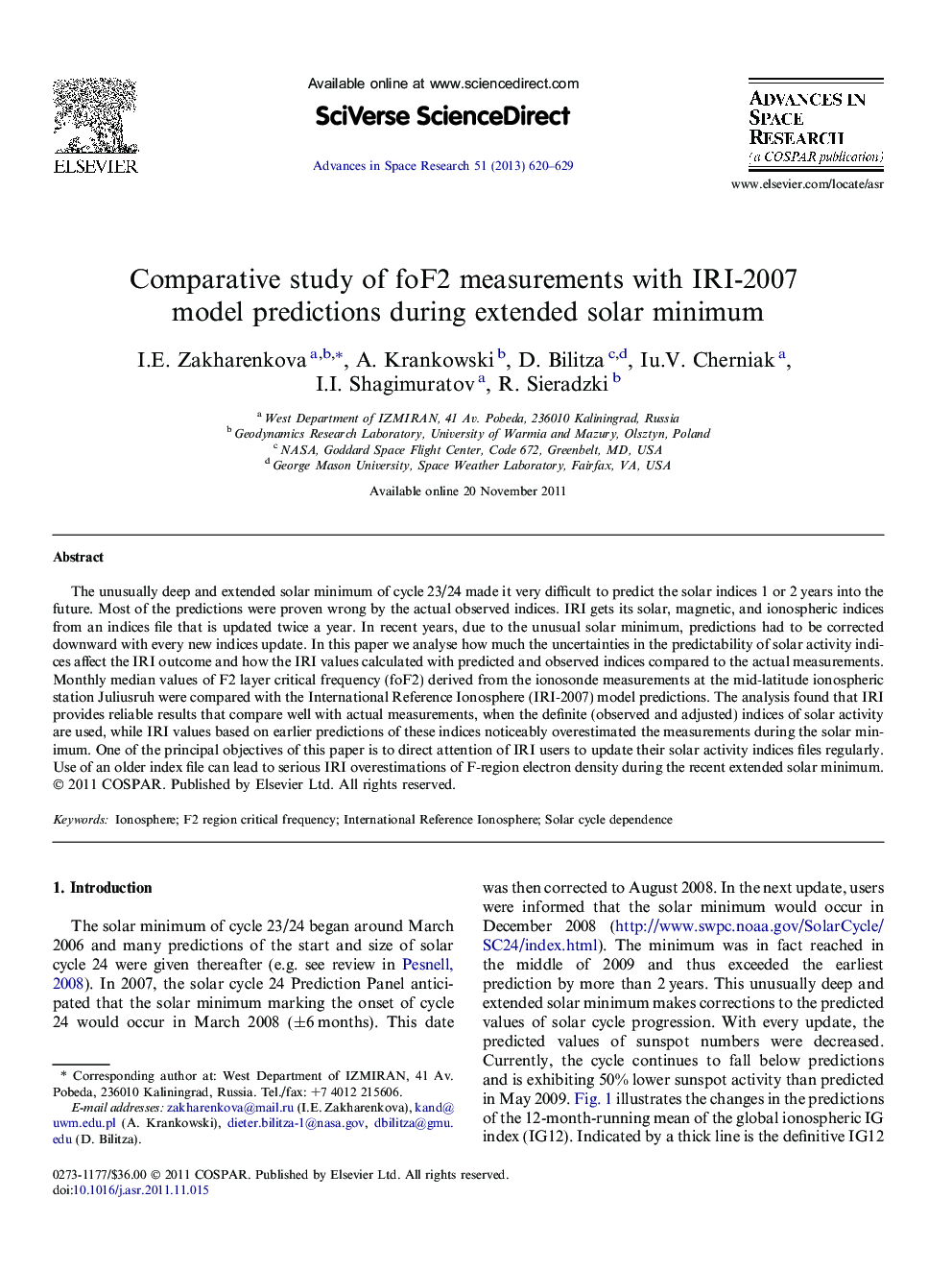| Article ID | Journal | Published Year | Pages | File Type |
|---|---|---|---|---|
| 1764988 | Advances in Space Research | 2013 | 10 Pages |
Abstract
The unusually deep and extended solar minimum of cycle 23/24 made it very difficult to predict the solar indices 1 or 2Â years into the future. Most of the predictions were proven wrong by the actual observed indices. IRI gets its solar, magnetic, and ionospheric indices from an indices file that is updated twice a year. In recent years, due to the unusual solar minimum, predictions had to be corrected downward with every new indices update. In this paper we analyse how much the uncertainties in the predictability of solar activity indices affect the IRI outcome and how the IRI values calculated with predicted and observed indices compared to the actual measurements. Monthly median values of F2 layer critical frequency (foF2) derived from the ionosonde measurements at the mid-latitude ionospheric station Juliusruh were compared with the International Reference Ionosphere (IRI-2007) model predictions. The analysis found that IRI provides reliable results that compare well with actual measurements, when the definite (observed and adjusted) indices of solar activity are used, while IRI values based on earlier predictions of these indices noticeably overestimated the measurements during the solar minimum. One of the principal objectives of this paper is to direct attention of IRI users to update their solar activity indices files regularly. Use of an older index file can lead to serious IRI overestimations of F-region electron density during the recent extended solar minimum.
Related Topics
Physical Sciences and Engineering
Earth and Planetary Sciences
Space and Planetary Science
Authors
I.E. Zakharenkova, A. Krankowski, D. Bilitza, Iu.V. Cherniak, I.I. Shagimuratov, R. Sieradzki,
